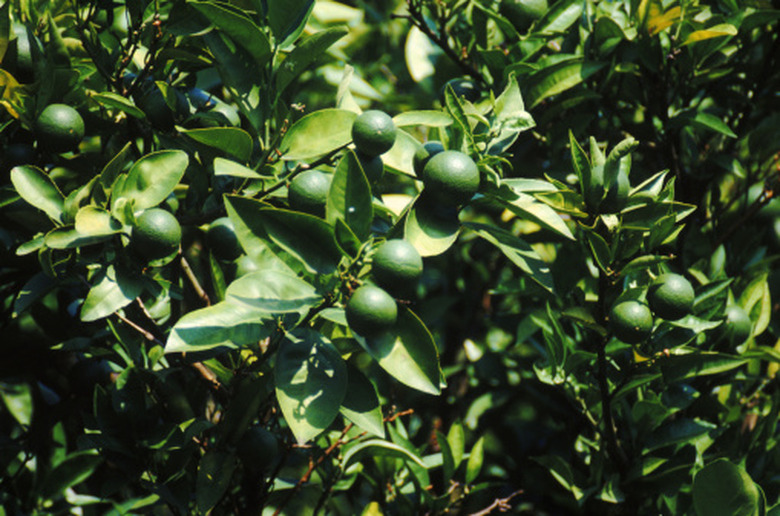Size Of A Lime Tree
The lime tree, which is more like a shrub than a tree, is an evergreen plant that is native to Southeast Asia or India. Lime trees can be grown indoors or out, either as container plants or garden specimens.
The lime tree, which is more like a shrub than a tree, is an evergreen plant that is native to Southeast Asia or India. Lime trees can be grown indoors or out, either as container plants or garden specimens.
Height
On average, the height of the Mexican or key lime tree, the most cultivated in America, is 6 1/2 to 13 feet, with extending, slender branches that spread in a bushlike, squat shape. Different cultivars have varying sizes, such as the Tahiti lime tree, which grows to heights of 15 to 20 feet.
Spacing
If planting a Mexican or key lime tree outdoors, Purdue University recommends spacing the trees 25 feet apart for optimum growth. Trees planted any closer together will not produce adequate yields. Tahiti trees, which are a less-vigorous grower, can be planted 10 to 15 feet apart in rows that are 20 feet apart.
- The lime tree, which is more like a shrub than a tree, is an evergreen plant that is native to Southeast Asia or India.
- Tahiti trees, which are a less-vigorous grower, can be planted 10 to 15 feet apart in rows that are 20 feet apart.
Container-Size Trees
According to the Oregon State University Extension, lime trees such as Baerr's can be grown in indoor containers if the size of the pot is appropriate to the root system of the tree. Container pots should be as tall as they are wide and switched out for larger containers as the tree matures. To keep a lime tree's growth to a minimum, trim the roots by one-third and replant when the tree begins to outgrow the pot.
Maximize Lime Tree Production
Select a young tree, only 1 or 2 years old, as they grow more vigorously and become established more quickly than an older tree. Look for large, uniformly green leaves on the lime tree. Choose a tree without damage to the trunk. A healthy tree is better able to produce more limes. Choose a sunny planting location that drains well. The ideal growing location allows the lime tree to grow more vigorously for maximum fruit production. Plant lime trees in the spring when there is no threat of frost. Water the soil around the tree after the first year to reach the roots that grow outward from the trunk. Fertilize lime trees every four to six weeks with a nitrogen fertilizer, starting in February. Limes that become overripe on the branch potentially makes the following year's limes smaller. Prune lime trees to grow larger fruit and decrease the chance of disease that can hurt fruit production.
- According to the Oregon State University Extension, lime trees such as Baerr's can be grown in indoor containers if the size of the pot is appropriate to the root system of the tree.
- To keep a lime tree's growth to a minimum, trim the roots by one-third and replant when the tree begins to outgrow the pot.
